Toyota Corolla Sales Top 50 Million Across the Globe
Toyota has sold its 50 millionth Corolla, cementing its position as the world's most popular model.
Over the course of the past 54 years, Australians have played a significant role in its success with more than 1.5 million Corollas sold locally.
Australia was the first export market for Corolla when 15 examples of the small 1.1-litre KE10 two-door sedan left the factory in Japan in November 1966.
They went on sale here the following year and every generation since has been warmly embraced by Aussie car buyers.
Toyota Australia Vice President Sales, Marketing and Franchise Operations Sean Hanley said the success of Corolla was built on its quality, durability and reliability and every owner had a story to tell.
"For many people, the affordability, efficiency and fun-to-drive attitude that Corolla has always epitomised meant it was often a first car," Mr Hanley said.
"Among the millions of owners, there are more than a few fond memories and here in Australia it has been so warmly received that it has become part of our cultural landscape.
"We would like to thank those millions of people that have put their trust in Toyota and made Corolla the world's most popular nameplate," he said.
Such was the appeal of Japan's "people's car" in Australia that in 1968, Toyota started local assembly of the Corolla at a factory in Port Melbourne - the first such operation outside of Japan.
Toyota Australia went on to build more than 666,000 Corollas until 1999 at factories in Port Melbourne, Dandenong and Altona.
Australia was also the scene for Corolla's first win in international motorsport with a class victory in the 1968 Hardi-Ferodo 500 at Bathurst.
This began a strong motorsport career for Corolla in Australian motorsport, which included winning the 2008 Australian Rally Championship in the hands of Neal Bates and Coral Taylor.
The success of Corolla in Australia has been replicated across the globe. In 1997, it became the world's most popular nameplate and last year, it was bought by more than 1.1 million customers.
It is sold in more than 150 countries and regions at the rate of approximately one every 28 seconds over the past year and is produced at 12 plants across the world in Japan, Brazil, Venezuela, China, Pakistan, South Africa, Taiwan, Thailand, Vietnam, Turkey, US and the UK.
Here in Australia, the car's enduring reputation for quality, durability and reliability was a key attraction for customers.
In September 2007, 40 years after the original Corolla went on sale, it notched up its millionth sale.
Since then, a further 500,000 Australian customers have bought a new Corolla with the car being the most popular passenger car in Australia for the past eight years.
From the very beginning, Corolla was designed to be affordable, safe, efficient and practical with a fun to drive attitude. It is those qualities, along with its legendary reliability, that have won customers across the world.
Corolla's first chief engineer Tatsuo Hasegawa, a former aircraft designer, wanted to develop a car that was comfortable, quiet, affordable and safe but with a sporting aesthetic.
Launched in Japan in 1966, it featured sporty design elements such as subtle curves in the body, and a semi-fastback roof line.
In Australia, Corolla went on sale in 1967 in a coupe-like two-door configuration and was immediately embraced by the Australian car-buying public.
Since then, with every generation, the Corolla has become more efficient, more stylish, safer, more comfortable and more fun to drive, ensuring it continues to appeal to a broad range of customers around the world.
Toyota remains committed to continuing to improve Corolla to meet the needs of customers and their needs in an ever more sustainable fashion.
Corolla in Australia

1st Generation Corolla - 1967
Complementing its sporting appearance, the 1st generation Corolla incorporated a number of features to enhance its driveability. A floor-mounted four-speed manual gearbox and MacPherson strut suspension provided a lively feel while a five-bearing internal crank for the 1.1-litre rear drive engine reduced vibration, delivering greater comfort.

2nd Generation Corolla - 1970
Further styling refinements produced a car with curved lines while a longer wheelbase provided more interior space and improved ride comfort and handling. The engine was enlarged to 1.2-litres delivering a substantial increase in power while the model's growing popularity encouraged Toyota to offer more variants with a coupe, sedan, wagon and even panel van on offer and three trim grades for the coupe and sedan versions.
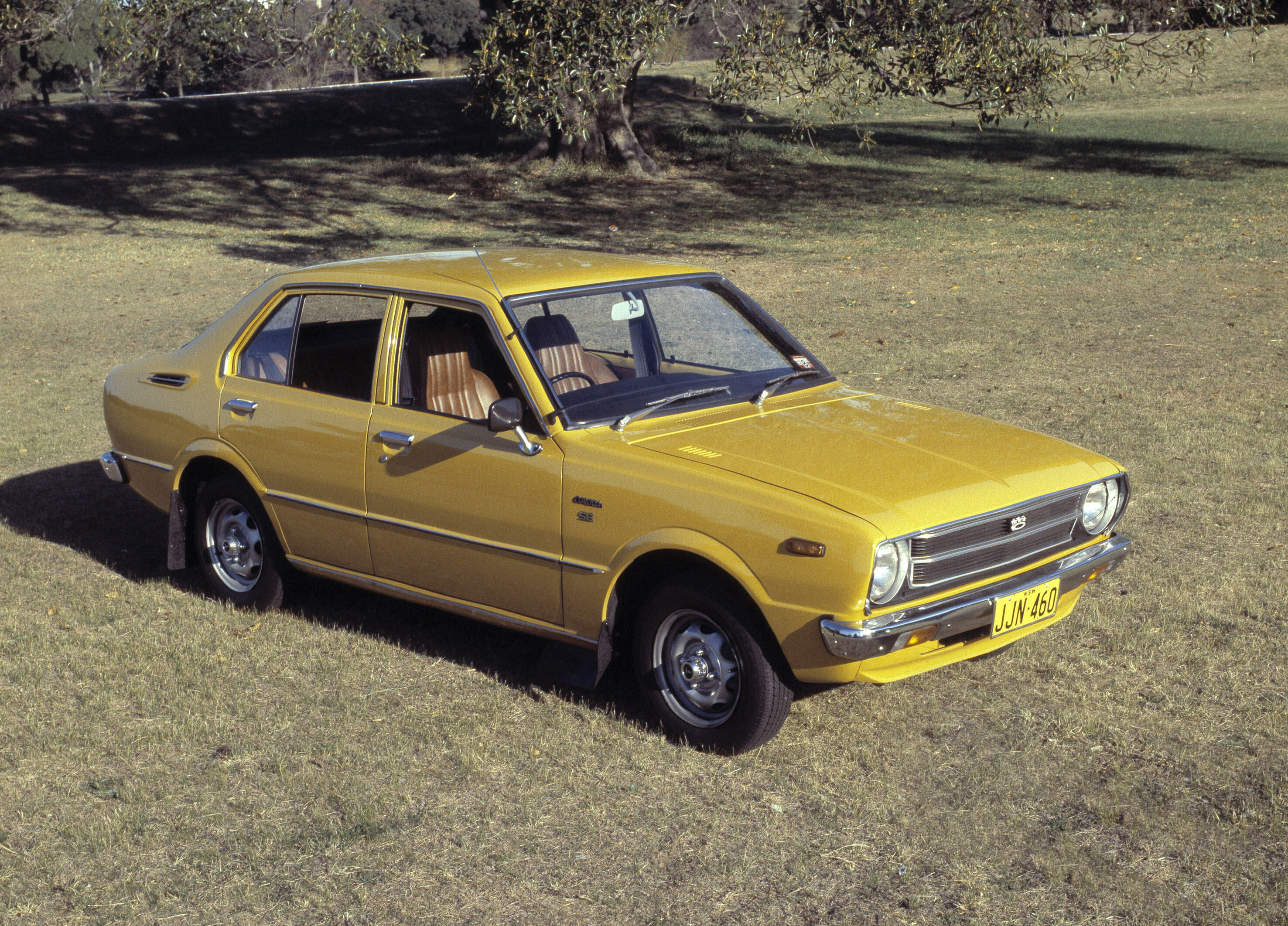
3rd Generation Corolla - 1975
With the world in the grip of a fuel crisis, fuel economy came to the fore in the minds of car buyers and the third generation Corolla delivered low fuel consumption and reduced emissions thanks to its pioneering proprietary Toyota Total Clean emissions control system. At the same time, the car's more curved surfaces, optimised in a wind tunnel for the first time, improved aerodynamics. Inside, the high quality finish was complemented by an increase in safety and comfort features. The popularity of Corolla had grown to a point where sales topped 20,000 in 1975 and have remained above that every year since.
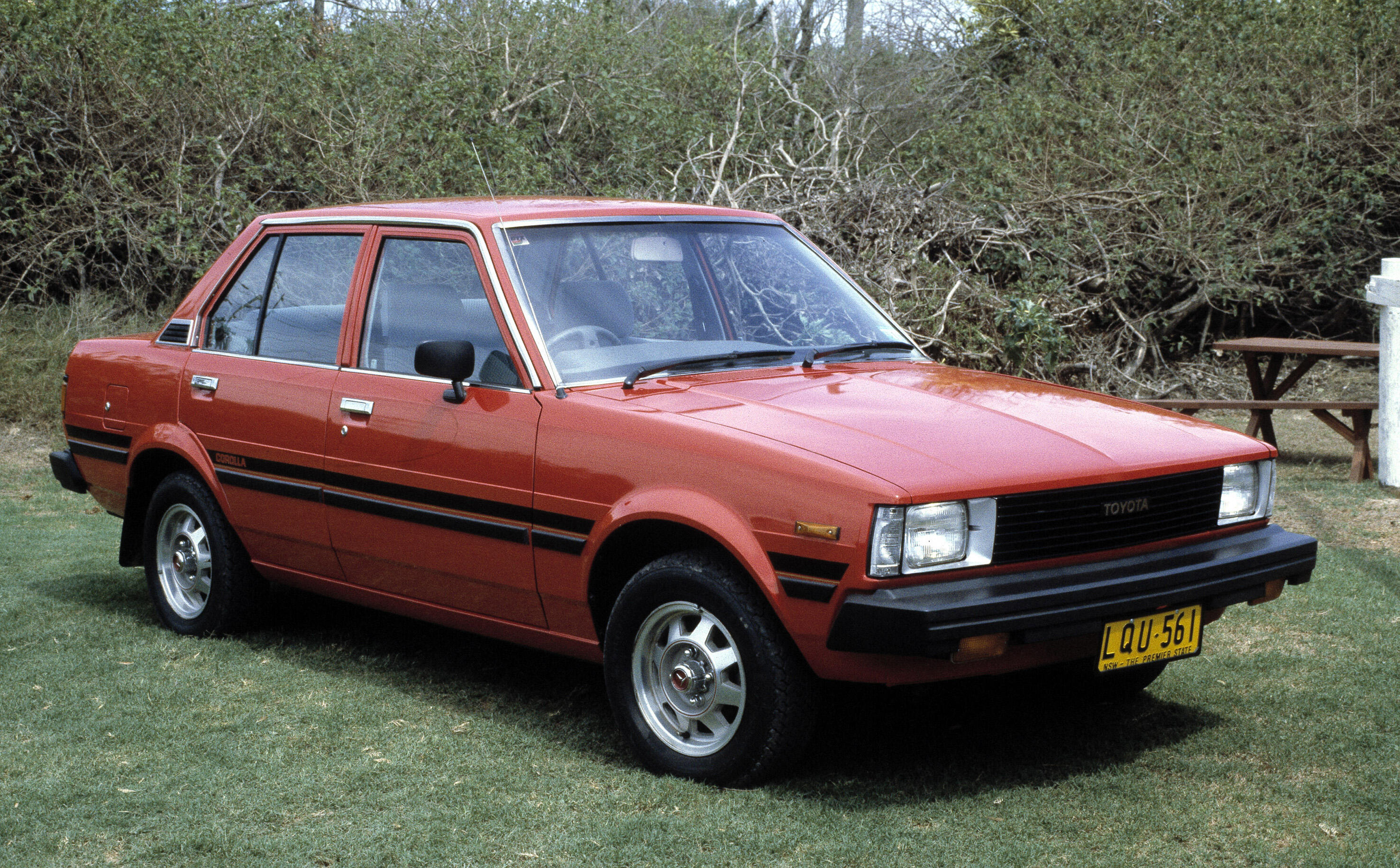
4th Generation Corolla - 1981
The sharp-edged wedge-shaped fourth generation Corolla was the last to feature a front engine, rear drive layout with the now 1.3-litre engine driving through a choice of four or five speed manual gearboxes or three-speed automatic depending on the variant. Ride and handling improvement came from a new coil-sprung rear suspension on most models and towards the end of the run, a new 1.6-litre engine was offered on higher grade versions.
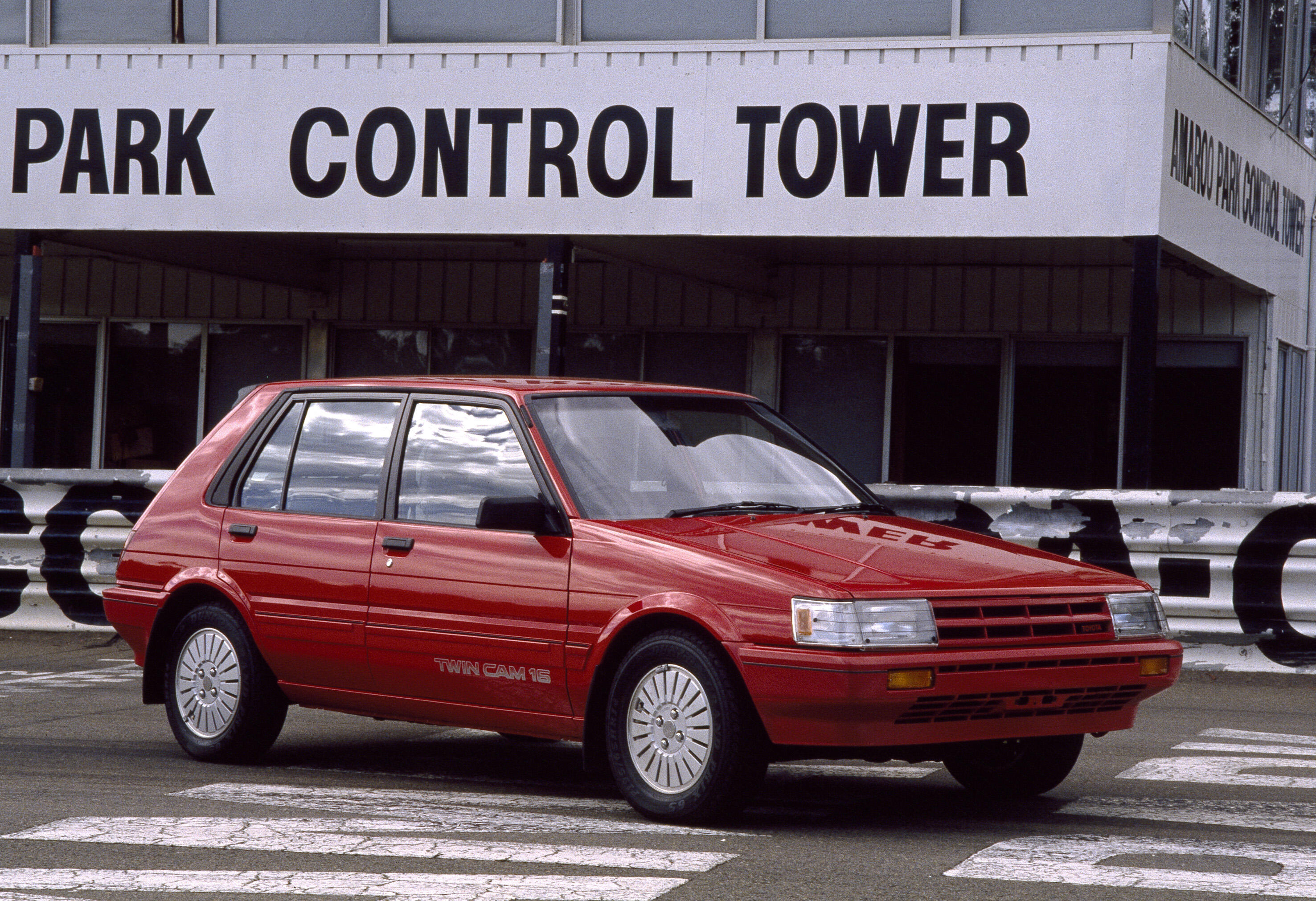
5th Generation Corolla - 1985
The arrival of the fifth generation in 1985 marked the beginning of a new era for Corolla. The range was trimmed down to a four-door sedan, five-door hatch and five-door liftback Seca and to further improve space efficiency, the cars were all front wheel drive. Designed for the first time with the aid of computers, it carried over the 1.3-litre and 1.6-litre engines but other advanced technologies including an electronically controlled four-speed automatic transmission and twin-cam multivalve engine technologies were first in class. Further refinements to the cabin delivered greater comfort with power steering and air conditioning offered across a broader range of variants.
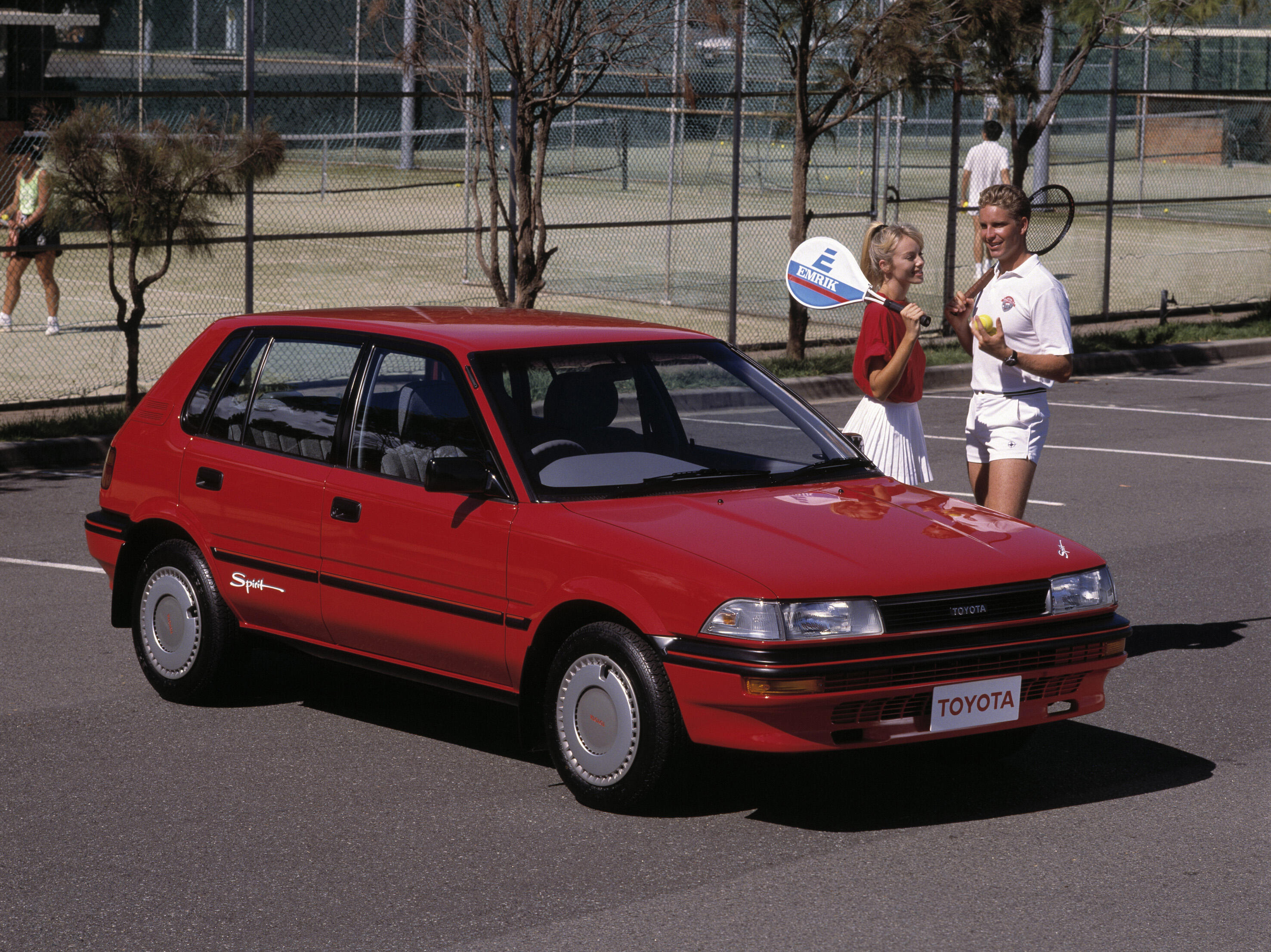
6th Generation Corolla - 1989
The sixth generation Corolla arrived with a more premium quality look and feel - inside and out. The largest Corolla to date, it offered a spacious, comfortable cabin and three new twin-cam, multivalve engines: 1.4-litre and 1.6-litre carburetor-fed units and a premium 100kW 1.6-litre fuel injected engine. A fuel-injected 1.8-litre engine was added to the lineup in 1992 and this was the era in which Toyota made its mark in local motorsport with Corolla taking class victories at Bathurst for eight years in a row from 1985-1992.
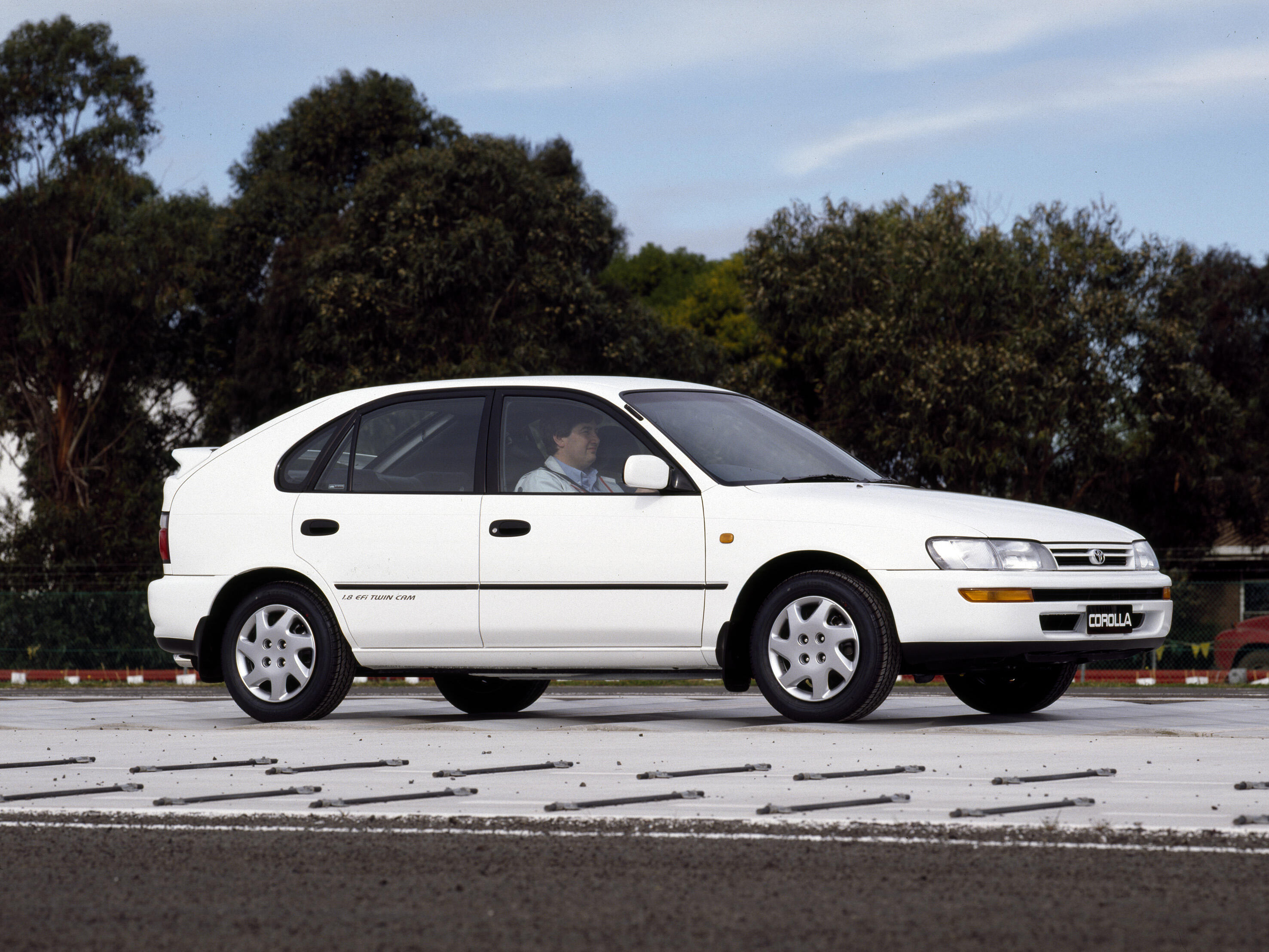
7th Generation Corolla - 1994
Toyota launched the seventh generation Corolla in 1994 with a lineup of 13 hatch and sedan versions that were all built locally in a brand new production facility at Altona. With the choice of fuel-injected 1.6-litre and 1.8-litre petrol engines, both hatch and sedan were larger and more rounded than their predecessors offering more interior space. For the first time in a Corolla, the availability of a driver airbag and anti-lock brakes added further safety.
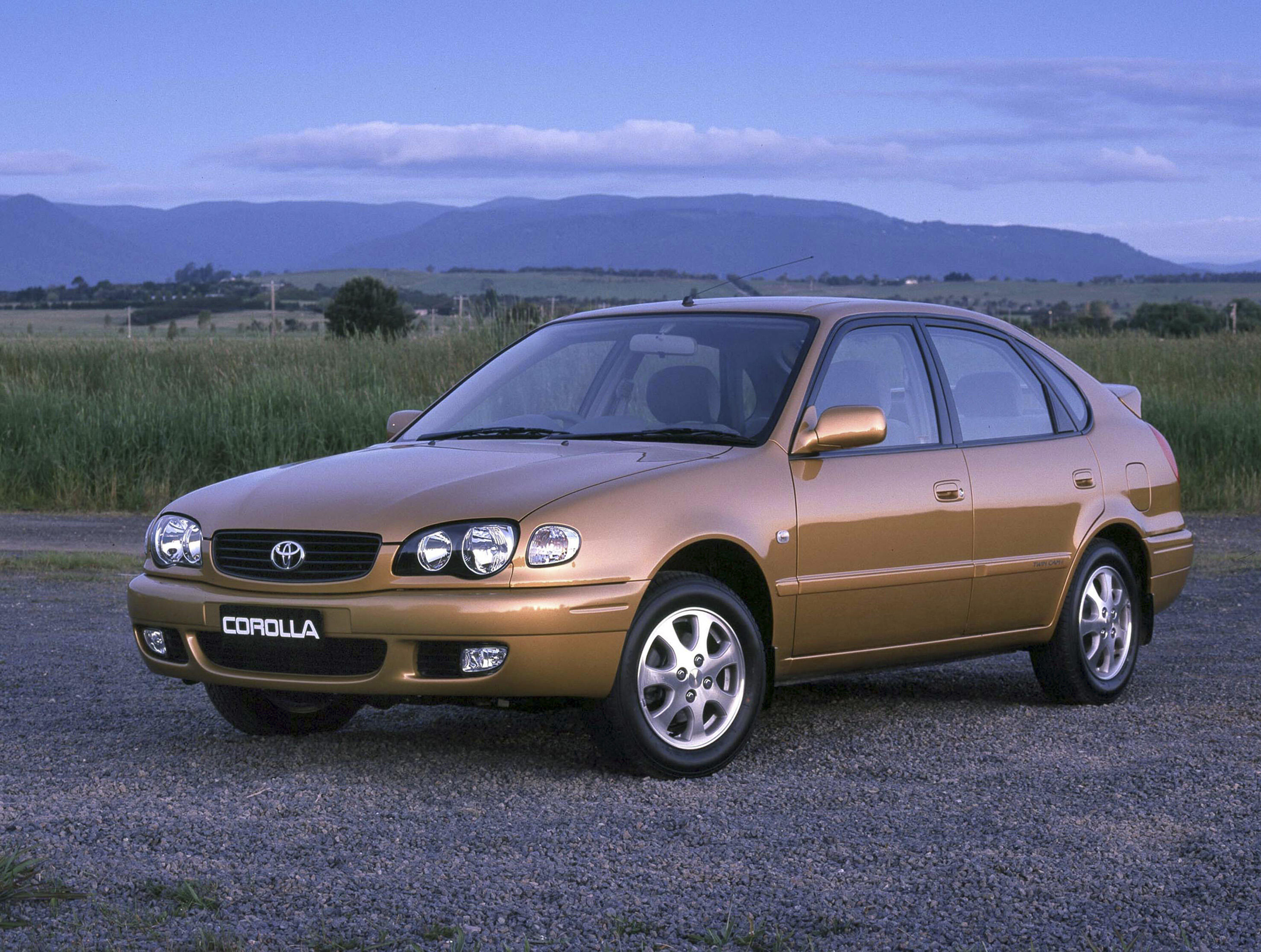
8th Generation Corolla - 1998
The first of the eighth generation Corollas to be sold in Australia marked the return of fully imported cars with a European-style liftback arriving in 1998. Following the cessation of local Corolla production the following year, the facelifted version of that car and a new imported Corolla sedan - with a choice of 1.6-litre and 1.8-litre engines - formed the lineup. Locally, Toyota had a hankering to produce something a little more sporty and, in 2001, developed a limited edition Corolla Sportivo featuring a 115kW turbocharged 1.8-litre engine mated to a five-speed manual gearbox.

9th Generation Corolla - 2001
Complementing its sporting appearance, the 1st generation Corolla incorporated a number of features to enhance its driveability. A floor-mounted four-speed manual gearbox and MacPherson strut suspension provided a lively feel while a five-bearing internal crank for the 1.1-litre rear drive engine reduced vibration, delivering greater comfort.

10th Generation Corolla - 20001
This was a marked change in direction for Corolla. Building on its quality reputation, the all-new generation sedan, hatch and wagon delivered sharper and more distinctive styling, more safety features, and a higher level of interior finish and equipment. Advanced engine technology including variable valve timing boosted the performance and efficiency of the sole 1.8-litre petrol engine offering.
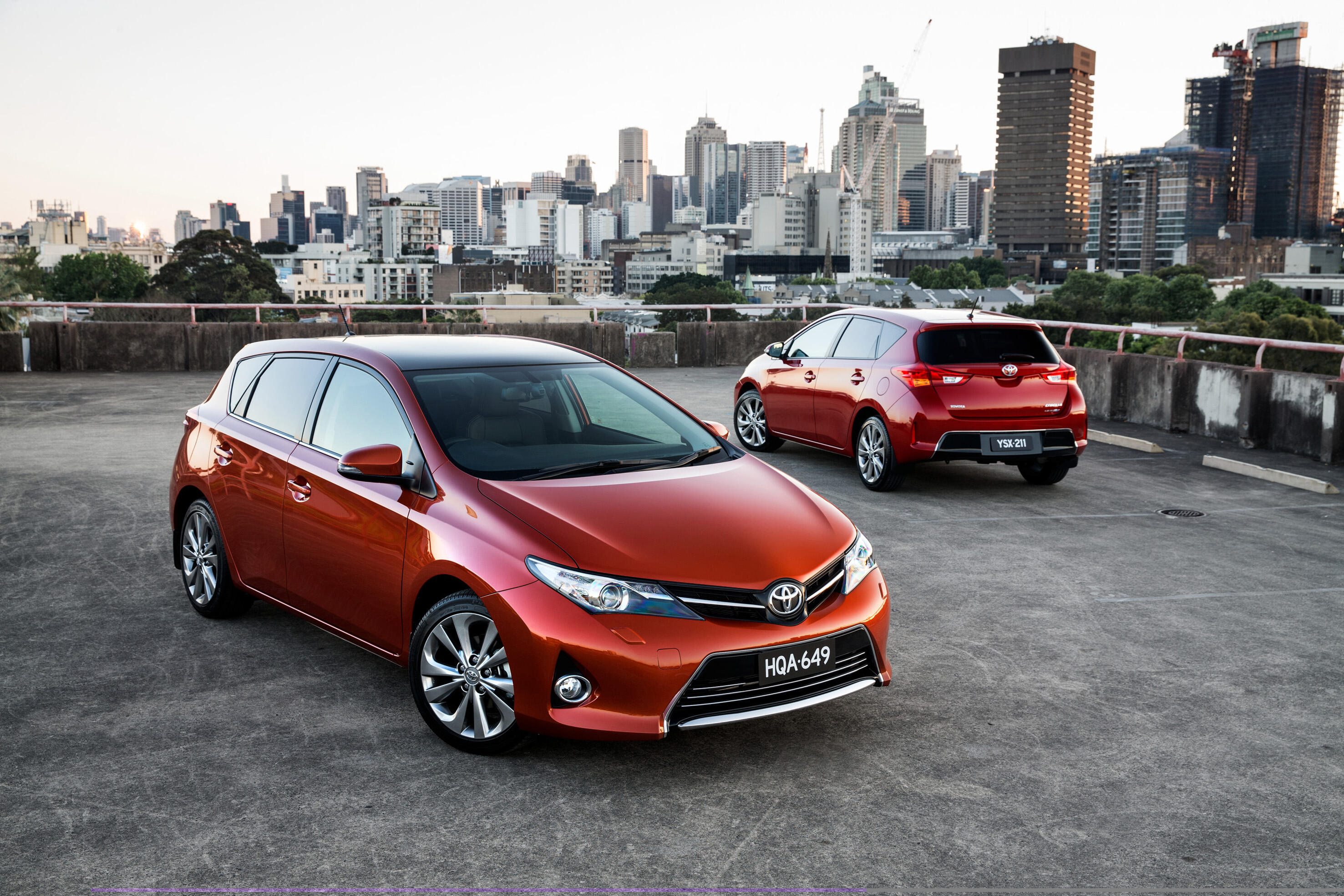
11th Generation Corolla - 2012
The 11th generation delivered a stylish Corolla hatch and sedan that further enhanced the look and feel of Australia's favourite small car with an emphasis on high quality design, materials and finish, new comfort and multimedia technology and gains in safety features. Engine enhancements, aerodynamic improvements, weight savings and other measures contributed to efficiency gains across the range and in what was to be a foreshadowing of the future, it introduced a hybrid powertrain to the range for the first time in 2016. The strong, fuel efficient petrol-electric drivetrain joined the existing 1.8-litre petrol engine and improvements to the chassis and suspension provided more dynamic handling.
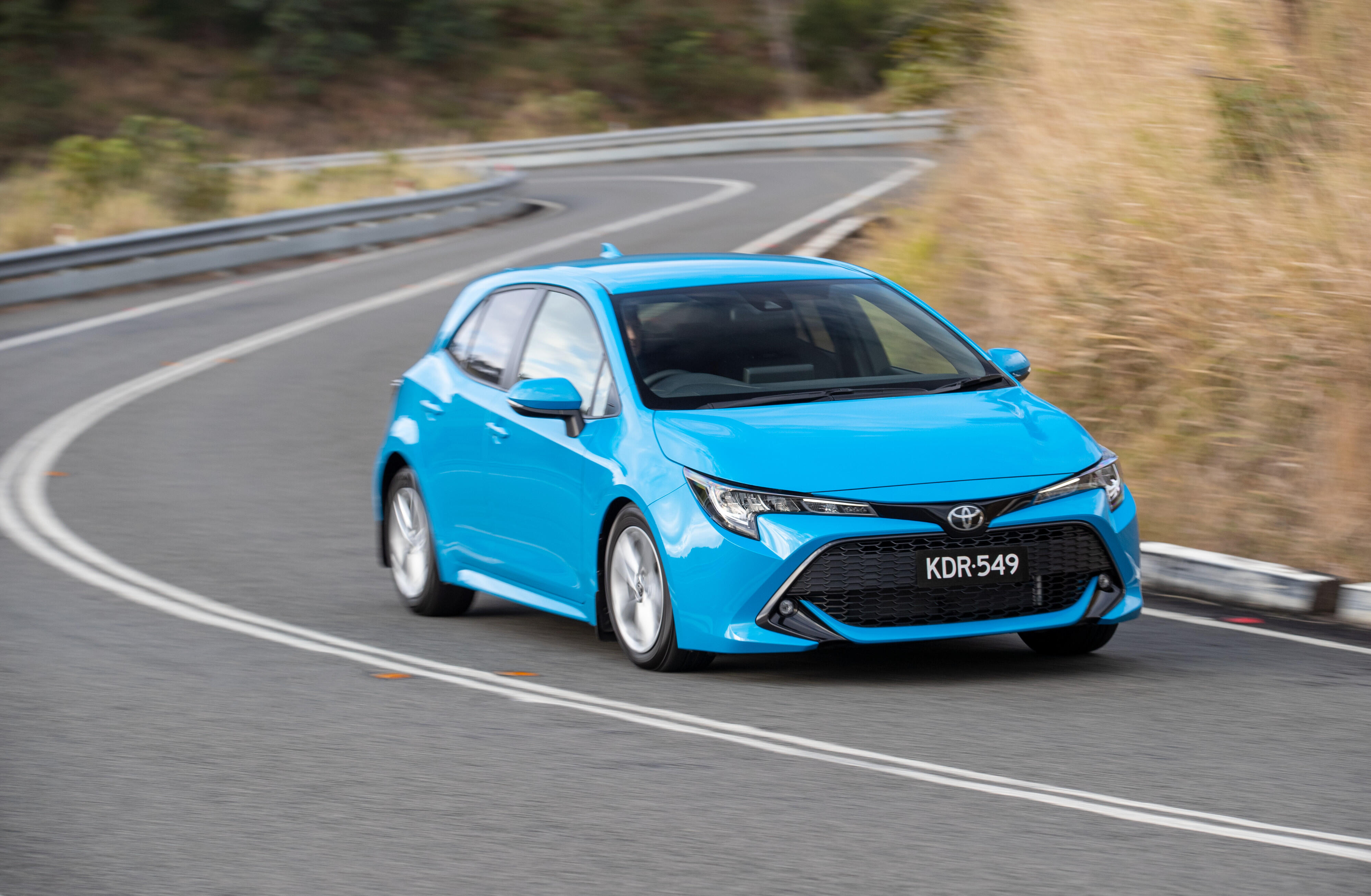
12th Generation Corolla - 2018 (sedan in 2019)
The arrival of the 12th generation Corolla brought even further improvements in dynamic handling and superb ride comfort, with the car being built on the all-new Toyota New Global Architecture (TNGA) platform. A new 2.0-litre petrol engine delivered the performance to match the bold new styling while the broader expansion of the hybrid offering for the hatch and sedan range appealed to customers seeking performance, efficiency and a lighter touch on the planet. The introduction of the Toyota Safety Sense1 suite of advanced driver assistance technologies provided class-leading safety and the stylish new interior offered new levels of comfort, convenience and infotainment.
1 Driver assist feature. Only operates under certain conditions. Check your Owner's Manual for explanation of limitations. Please drive safely.







